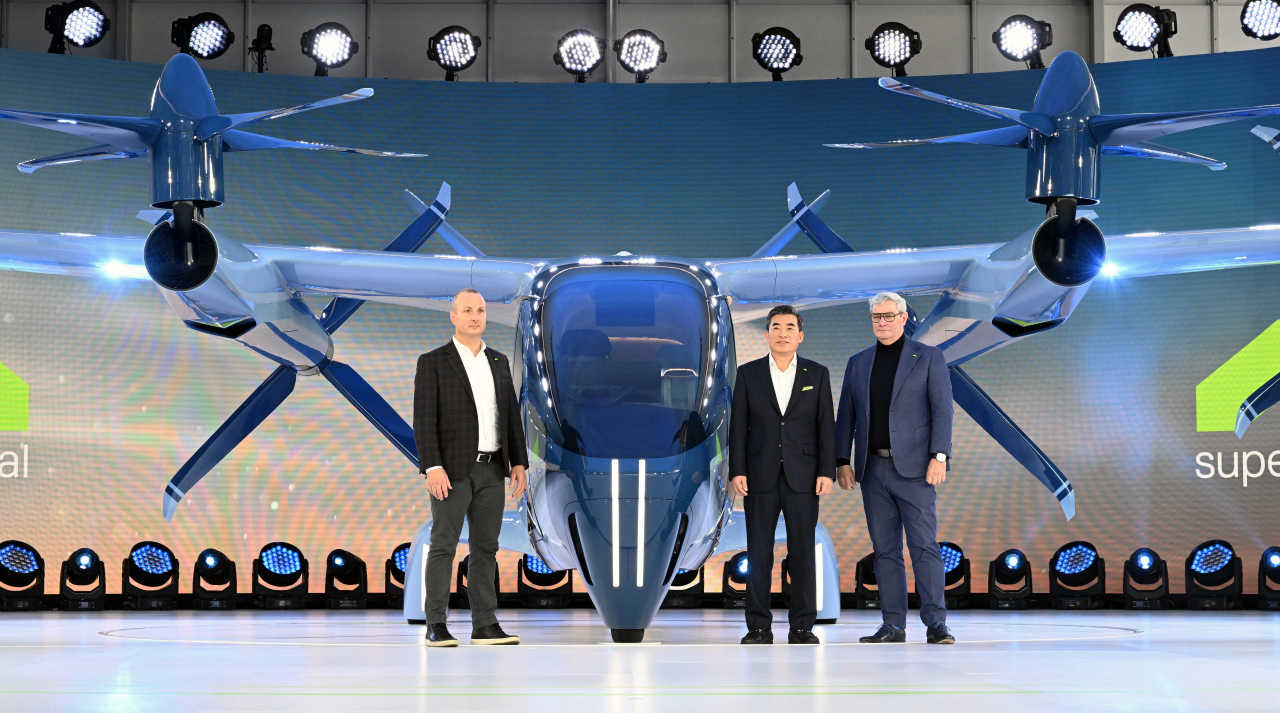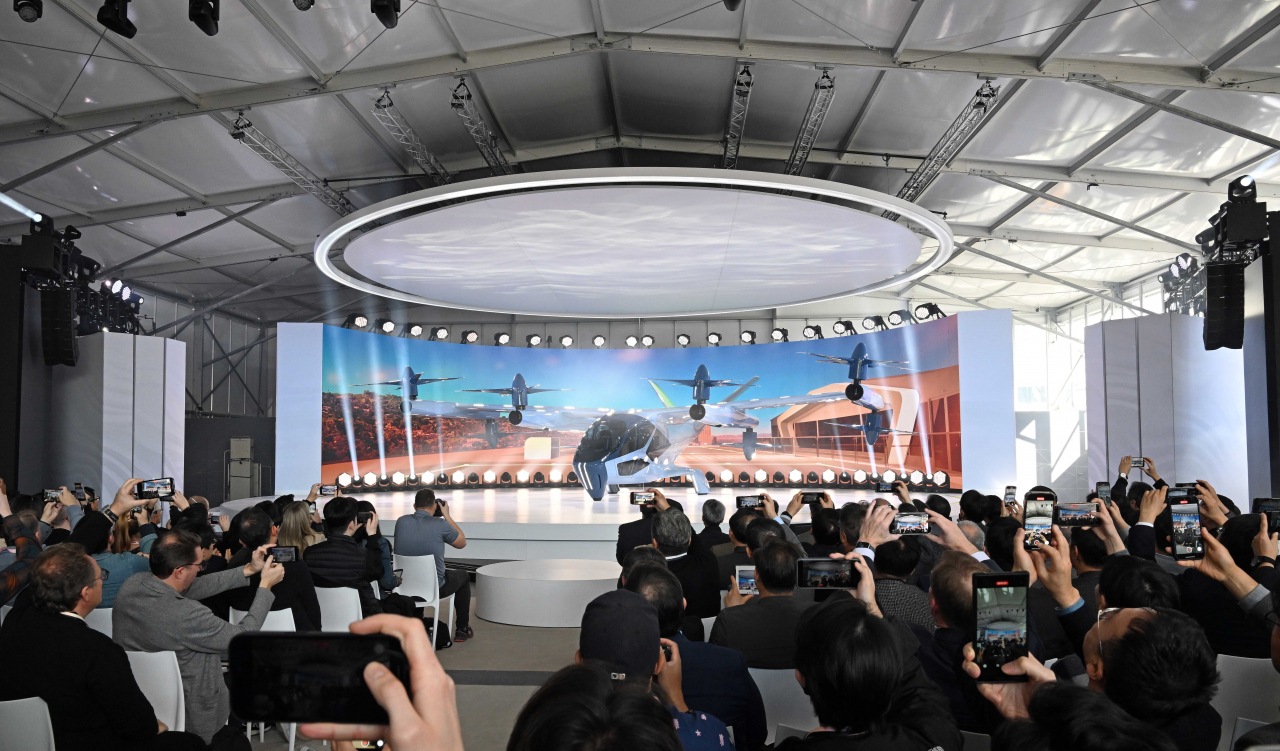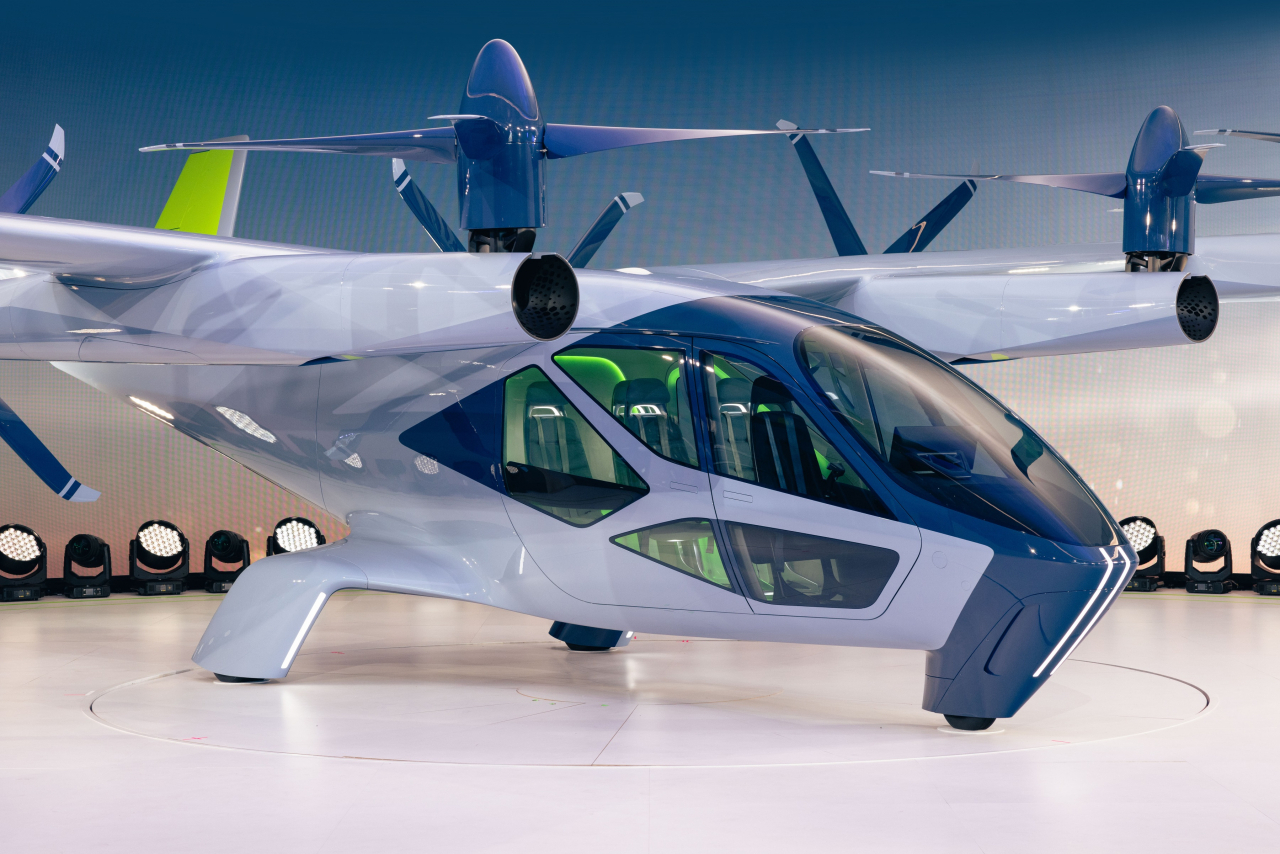 |
(From left) Ben Diachun, chief technology officer of Supernal; Shin Jai-Won, CEO of Supernal; and Luc Donckerwolke, chief design officer of Hyundai Motor Group, stand before the newly revealed S-A2 eVTOL aircraft at the CES 2024 in Las Vegas on Tuesday. (Hyundai Motor Group) |
LAS VEGAS -- Supernal, Hyundai Motor Group’s air taxi subsidiary, unveiled the next generation of its aircraft, the S-A2, at CES 2024 in Las Vegas on Tuesday, marking a substantial step in its drive to introduce flying taxis.
"We have pushed the technical boundaries toward a future where cities are free from congestion and limited mobility. Our goal is to bring air taxi service to both the US and Korean markets by 2028," said Shin Jai-won, executive vice president and head of Supernal.
 |
An audience at the outdoor exhibition hall of the Las Vegas Convention Center West Hall witnesses the debut of Supernal's latest urban air mobility innovation, the S-A2. (Hyundai Motor Group) |
Hyundai regards electric vertical take-off and landing, or eVTOL, aircraft as the future of transportation, particularly for urban areas. Their minimal runway requirements, along with low noise, wind, and carbon impact compared to traditional helicopters, make them ideal for both sprawling American cities and densely populated cities like Seoul.
All eight rotors on the S-A2 have full-tilt capability, unlike the S-A1 introduced two years ago, on which half of the rotors were dedicated to vertical lift only. This gives it greater efficiency when flying forward.
The new 10-meter-long and 15-meter-wide aircraft is slightly larger than a standard light utility helicopter, primarily due to its rotor span. The aircraft has a cruising speed of 200 kilometers per hour and a maximum altitude of 400-500 meters, so is suited for urban trips of up to 60 km. Another focus area is noise reduction, with the S-A2 targeting operational noise levels between 45 and 65 decibels -- akin to a running dishwasher.
 |
The S-A2 is a more mature version of its predecessor, introduced two years ago, featuring a more advanced eight-rotor design with comprehensive tilt capabilities. (Hyundai Motor Group) |
However, Supernal has yet to specify the production plan and location for the S-A2 despite the 2028 commercialization target.
Like electric vehicles on roads, battery technology is pivotal to the future of eVTOLs in the air. With ongoing improvements, these aircraft could expand in size and capacity. The S-A2’s range per charge was not disclosed.
“Our S-A2 is limited to four passengers right now, largely due to battery and power constraints. We will utilize Hyundai's know-how in long-range EVs to up our game in range and size," Shin said during a press conference that followed the reveal.
Supernal is also aware of the competition. American rival Joby Aviation delivered its electric air taxi to the US Air Force last November and eyes commercialization by 2025.
"There are competitors who might get there faster or cheaper, but the real winner will be the one who nails safety and reliability. Think about it. These aircraft will be flying over crowds in cities," Shin said.
The company stressed safety, pointing out redundant systems for critical components to ensure that a single point of failure does not lead to a catastrophe. The aircraft also aims to meet commercial aviation safety standards and is capable of operating at night and under various weather conditions.
Shin also noted the varying challenges in AAM infrastructure development across regions. Supernal is working with governments and investors to align infrastructure with the S-A2's deployment in the US and Korea.
While the specific pricing for the S-A2 remains undisclosed, Shin mentioned that industry averages for such aircraft are around $3 million.







![[Today’s K-pop] Blackpink’s Jennie, Lisa invited to Coachella as solo acts](http://res.heraldm.com/phpwas/restmb_idxmake.php?idx=644&simg=/content/image/2024/11/21/20241121050099_0.jpg)